- Home
- Alistair Moffat
The Secret History of Here Page 12
The Secret History of Here Read online
Page 12
23 March
A very shaggy, winter-coated Maidie went to the dog groomer in Selkirk and she came back shorn and shelpit, a Scots word for skinny. Even though we had sun this morning, I put the wee coat on her as she sniffed after bunnies.
24 March
Lately I have found my professional life frustrating, difficult, and I thought I might drive over to the Holy Island of Lindisfarne for a break, a few hours to myself. I love that place, and I decided some time ago that if I felt I needed it I should seek its peace.
On a bright, blustery Sunday morning, I found myself summoned by bells as soon as I arrived. St Mary’s Church is ancient, parts of it Anglian, and it stands next to the ruins of a later Benedictine priory. A warm and welcoming church, with the sun streaming through the stained glass casting a kaleidoscope of colour, its congregation of thirty-five or so, most of them probably islanders, had gathered and the organ was playing. A woman smiled at me, came across to my pew and asked if I was Graham, a vicar from a church on the Wirral who had come on a retreat. It made me smile. I have been seen as and called many things but never before a vicar. As the service began (with the vicar of St Mary’s asking if anyone needed a gluten-free communion wafer), I left to go and walk around the island.
At the farthest north-east corner stands the day-mark at Emmanuel Head, a white obelisk raised to discourage shipping from coming too close to the offshore reefs. As usual, the crowds of visitors had stayed in the village or gone to visit the fairytale castle, and at last I had some solitude, but no real peace. The island is tidal and the causeway to the mainland would become impassable at 2.45 p.m. That kept me checking my watch, forcing me to follow a timetable.
But I did go to the places I liked and I had time to fulfil one important vow. In the cemetery around St Mary’s I had come across a headstone with a heartbreaking inscription that had brought tears when I saw it last year. Hugo, a baby of only fourteen months, had died and I wept for him and for the hurt suffered by his parents. In 2015, Hannah, our first granddaughter, died and I had some sense of the weight of their sadness. In St Mary’s I lit candles for the wee ones, and another for Grace, my sparkling granddaughter, Hannah’s little sister.
Before I had to catch the tide, I climbed up to the Heugh, a narrow rock that rises to the south of the priory ruins and looks out to sea. I was alone there with my thoughts for a while. It was a good moment.
26 March
Three oystercatchers were wheeling and wheeping in the grass park to the west of the Long Track. Usually coastal birds, we sometimes see them in spring when they come inland, poking and strutting across the damp, dewy grass. Their flight looks more like display as they rise up, banking, tilting their wing-spreads, showing their white undersides and wingbars. Their piping wheep-wheep call is one of the sounds of spring.
Around the farmhouse flew more harbingers of the warm seasons to come. The little wagtails have arrived, bobbing around the outbuildings, their tails wagging up and down, their beaks full of horse hair or small twigs, quickly taking off in their undulating flight that seems somehow to be jumping fences.
27 March
Looking after my granddaughter for a short time today was easy. Probably because she had a cold, Grace slept deeply in the middle of her parents’ bed. On her back, with her head turned to one side, she looked perfect, angelic, completely at peace.
28 March
It was a still, black, moonless night and the stars were hidden behind dense cloud. Suddenly the silence was rent by frantic thrashing in the pinewoods north of the farmhouse, by unseen movement, by something big, angry and uncaring of any noise it made. I stopped dead at the foot of the Bottom Track, peering into the blackness, my little dog beside me, frozen, not barking, her ears pricked and tail up. At any moment I expected something, no idea what, to explode from the trees. The most dangerous predator to stalk the countryside is man.
The thrashing paused. And then moments later I saw a shape race across the track and behind the trees that fringe it. Shapes in the night can be made into anything and I had no idea what I had just seen, except that it moved too quickly for a human being. All I knew for certain was that it scared me.
Dylan Thomas wrote of nights such as these as bible-black, but I think they are pagan-black. Before the twentieth century brought electricity to even the remotest country districts – as well as lighting streets, cars and buildings – dark nights were completely and unrelievedly dark. Only oil lamps could be taken outside and in any sort of wind they could be quickly snuffed out. When the world was black-dark, few ventured over the door unless they had to. The world of the night was dangerous, for who knew what lurked in the woods, or rose up out of the mosses and sikes to grip an ankle and pull down the unwary? What dancing lights led the lost to flounder in the sucking morass and draw them down, spluttering and choking, into the cloying deeps of the world?
Writing this in the bright morning after, these fears seem like melodrama, but last night, for more than a moment, I confess I was badly frightened, and I still have no idea what I heard and may have seen.
29 March
Having propagated rows of seedlings in trays, I potted on the most vigorous shoots into small fibre containers, ones that will disintegrate when I plant them in Gro-Bags in the conservatory. I planted more seeds than I needed and it always vexes me to throw away the little seedlings I don’t want. It is not only the waste; the extinguishing of green, delicate, spring-like life does upset me. I don’t like killing any living thing, but it is ridiculous to be so absurdly sentimental about plants. And yet I can’t help it. Perhaps it is because I grew them from seed.
30 March
The beginnings of blossom are peeping through the hedges and woods. No scents yet but they will come, and a first fresh flush of leaves is unfurling on the geans and thorns.
31 March
This is both Mothers’ Day and the first day of British Summer Time, what feels like a fitting conjunction. But even though the clocks moved forward and I had an hour less sleep, it does not matter. Clocks are irrelevant here. What matters is that I saw a beautiful, metallic pink dawn followed by a brilliant morning sun whose warming fingers reached across the land, defining its ridges and swales. Looking over to the Deer Park, I could see the line of the ditch of the park pale, even where it had been partly obliterated by a small quarry. Maidie and I walked across the field behind the wreckage of the Top Wood, dodging fresh cowpats as though they were landmines, and we stood on the highest point of the ridge to look to the west over our little valley and to the Ettrick Hills beyond. Creation looked well this morning.
April
1 April
Huntigowk! Huntigowk! Meaning ‘hunt the cuckoo’, it was what we used shout in our street at someone who had been caught out on April Fools’ Day. It is a tradition that seems, sadly, to have waned. Perhaps there will be a Loch Ness monster story in the papers.
On another crystal morning, cold and very brilliantly sunny, it felt instead like Groundhog Day, an American import but an original one. Yesterday I saw a solitary heron fly high over the Long Track and the Tile Field before disappearing into the distance over Brownmoor. This morning at exactly the same time a heron flew in exactly the same direction. Let’s see what happens tomorrow.
Out before dawn to pee the dogs, I looked out to the west. Moving slowly across its flank, a flock of sheep climbed Howden Hill to catch the first rays of the sun. I don’t know why but it was one of the most beautiful sights I have witnessed so far this year.
2 April
Yesterday saw another of the year’s turning moments as the first of the spring lambs came out to grass from the warmth of the heat lamps and the straw in the shed where they were born. They were in the park to the east of the Long Track. Four ewes herded six lambs, one of them jet black, to the fence line below the Young Wood. Not only was there shelter from a stiffening breeze, the new grass had been flushing near the warmth of the trees. It was a sight to lift a winter heart.
/>
3 April
A chill wind was blowing out of the north this morning and the ewes and lambs were once again hugging the fence line by the Young Wood. It runs east to west and its overhanging boughs sheltered the wee ones. I could not see any lying in the sodden grass and so their mothers’ milk must be sustaining them through the bad weather. There was snow on the ridge where the Thief Road runs and I remembered that the hill lambs are always later.
4 April
Two bewildered worms and a snail slithered slowly across the snow on the Long Track. It had been falling since the early hours, big flakes floating down and covering the land quickly. In the grass park beyond the track the ewes and lambs would shiver in this late winter flourish and have to scuff the snow aside to find grass, but it is better than wind-driven rain. Equally important for us was the question of being able to drive up the track.
5 April
A bright day and buds are beginning to open.
7 April
For the long, sandy coasts of South Uist, winter flood tides have an immense length of fetch, their waves made by winds off the coast of Canada and driven three thousand miles across the vastness of the mighty Atlantic to spend themselves on the beaches and cliffs of the Hebrides. These titans rear up and crash with tremendous elemental power, but instead of destruction they bring life to Uist. Ground by the unceasing churn of the sea, shells become powdered into calcium-rich sand and when the winds carry it inland, it neutralises the acidity of the peat and makes the machair, a fertile grassland littoral of great beauty.
Warmed by the waters of the Gulf Stream, the machair begins to flush in April and, long dormant, many hundreds of thousands of wildflowers push through the rich soil and begin to bud. By the beginning of May, the colours are dazzling: waving in the offshore breeze are sea-pinks, purple harebells and bluebells, yellow trefoils, eyebright, gentian and the intense scent of wild thyme. Ground-nesting birds like the corncrake, chough and corn bunting call and sing, feeding on the insects while yellow bumblebees drink the nectar of the machair’s flowers.
Three thousand years ago, our ancestors grazed their little black cattle by the ocean and built houses on the margins of the grassland. At Cladh Hallan, archaeologists uncovered ancient ruins and made an amazing find under the floor. The remains of two mummified bodies emerged from the soil. At about the same time as Tutankhamun was placed in his golden sarcophagus, this Hebridean community understood that the dense, anaerobic peat would preserve corpses and, immediately after death, they took two important people and placed them deep in a bog for between six and eighteen months. On exhumation, it was found that all the processes of decay had been pre-empted. The bodies, a man and a woman, were then mummified but not buried. Perhaps they were displayed in a special building. Sometime around 1000 BC they were both buried under the floor of the house discovered at Cladh Hallan. No one can do anything but theorise about the beliefs of these people, except to note a long and very moving continuity.
Cladh Hallan is still a place of the dead. On a low mound in the machair, rows of gravestones punctuate the horizon, and this year one of them will be raised to an old friend. A native Gaelic speaker from South Uist, he died last week and tomorrow I will go to his funeral at the Catholic church in Melrose before his family take him back to home, to Cladh Hallan, where his people are waiting for him.
8 April
The air was filled with the vibrato bleating of hungry ewes. More than a hundred are now out in the grass parks, with their tiny lambs nickering behind them. From what looks to me like a golf buggy, my neighbour shakes out sacks of hard feed as the sheep gather around him. Some of the lambs look vulnerable and I saw one with a deformed foreleg. Perhaps it will straighten out as the richness of its mother’s milk builds bones.
It is a grey morning. The land seems not to stir, a good day for a funeral. In my friend’s memory, I shall recite a Gaelic lyric we both loved, and it will seem sad and strange to me not to be able to speak to him in the mouth-filling language of the islands.
For centuries, a dialect of Northumbrian English, what is now called Scots, has been everywhere in the Borders and Central Scotland, but it was not always so. In his magisterial Ecclesiastical History of the English People, Bede of Jarrow lists the five languages spoken in Britain: Latin, of course, the language of the book, the Word of God, along with English, Old Welsh, Gaelic and Pictish. Only one of these now remains, but the map is speckled with place names from all of them, including Latin. Within only a few miles of where I sit writing this is Selkirk, an Old English name that means ‘the church by the hall or manor house’; Kelso is derived from Calchfynydd, Old Welsh for ‘chalk hill’; Glendearg near Galashiels is from Gaelic, ‘the red valley’; Eccles in Berwickshire is ultimately from the Latin word ecclesia, a church; and further afield, Perth is Pictish for ‘copse’ or ‘thicket’.
The Ogham stone I found in the Deer Park was inscribed in Irish Gaelic, so there may have been an old, lost name for our farm. Language shift is impossible to trace accurately in the deep past, but I am certain that Bede, Cuthbert and the early saints lived in a multilingual society, something now sadly lost. And now, with my old friend’s death, another of Scotland’s old languages falls silent in the Borders.
9 April
Swinging their picks in a rhythmic arc, allowing the weight of the tine to do the work, the farmers and shepherds were digging a ditch. Once the earth and stones had been loosened, women and children shovelled it into wicker baskets and carried load after load uphill to pile it on a bank. Having tipped out the earth, they stamped it down on the upcast. On the rampart of the old fort, only a few yards uphill, warriors watched the work go on. Built many centuries before by the Old Peoples, circled by steep and deep ditches, the fort corralled ponies and was a good place to camp.
After the funeral yesterday, I parked below the Rink, a striking prehistoric hillfort close to the junction of the Tweed and the Ettrick, between Selkirk and Galashiels. Halfway up the slope below the fort is a long copse fenced off to keep out curious lambs. It is a short section of a lost frontier known as the Catrail. Probably dug sometime in the seventh century, a deep ditch and bank ran for fifty-eight miles across the valleys of the upper Tweed and Teviot before disappearing into the Cheviot Hills. It marked a cultural and, at first, a linguistic divide. To the west of the Catrail are many place names that derive from Old Welsh, and to the east, most of the farms, villages and towns are named in English.
The copse is very atmospheric. Once I had climbed the fence without mishap, feeling a little overdressed in the suit and tie worn for the funeral, it was possible to forget that the twenty-first century rumbled below on the A7 and to find myself standing at a pivotal place on the faded map of an ancient Scotland. Even though none of the stones that had tumbled into the ditch had been worked and only faint traces of this great labour remain, there is a genius loci in this unlikely survival of the old frontier. It is a place of spirits not yet fled.
Some of the wisps of history that float in the air around this atmospheric place are unexpected. Until its adoption by the Nazis in the 1930s transformed it into a symbol of evil, the swastika was thought to bring good luck and also be a link to the gods. For the Romans, it was a representation of the forked lightning of Jupiter’s thunderbolts. Recently an iron swastika fob was found just below the line of the Catrail. A rare object, it was suspended, dangling below a part of the harness ponies wore when they pulled chariots. In the last few centuries BC, warriors of the native British kindreds were expert charioteers, able to race their ponies over uneven ground, bouncing up and down but keeping their balance and a tight hold of the long reins. In his description of the fateful battle at Mons Graupius between the Roman legions and the Pictish host in AD 83, Tacitus wrote of them moving back and forth in front of the native army. Warriors are superstitious and perhaps their swastikas were good luck charms. But what were charioteers doing at the Catrail? The chance find of this object is like a momentary, blinding f
lash of light in the black darkness of prehistory.
There was also a wider significance at play on either side of the Catrail. Behind the rampart lay the lands of the hillmen, shepherds and hunters, and to the east were the fertile fields of ploughmen, the valuable, productive farms and villages claimed by the Anglian invaders, the warbands of the dynasty of Aethelfrith, the warrior-king whose men had overrun the lower Tweed Valley.
The morning clouds had blown away and the sun streamed through the bare branches of the thorn trees. The breeze had dropped and, as I walked back down the hill, I watched the lambs come to life. In the warmth, groups of them skittered unsteadily around the field, some of them jumping as though on springs. Gambolling is, I believe, the technical term. In her excellent eulogy, my friend’s daughter had said how much her father had loved the springtime and that he could have lived life on a continuous loop from late March to the end of June. Perhaps the swallows he loved so much will come soon.
10 April
Swaddled in lanolin, the lambs lay on the frosted grass, waiting for the sun. After temperatures had dropped to well below zero, the morning fields were white. A stiffening breeze riffled the wind-worn willows by the Common Burn and the sun’s rise seemed slow and sluggish, hidden by gauzy scarves of cloud on the horizon.
When at last Maidie and I walked down the Long Track, she kept stopping, planting her forepaws on the stones. After a few tugs and words of encouragement, I realised that she was apprehensive about passing a small group of ewes gathered by the fence. Very un-terrier-like. Their lambs lay in the winter wrack, the longer stalks of weeds and old grass on the edge of the field, and these mothers were not for moving. A dominant ewe stamped her forelegs on the frozen grass.
By the time sunshine had flooded across the landscape, it was as though a series of triggers had been pulled. Along the fence line of the Young Wood a flock of thirty or forty lambs began to race together, back and forth, while their mothers waited patiently for my neighbour to arrive with breakfast, bags of hard feed to supplement the sparse grass. The breeze began to drop and the land to settle to the rhythm of another spring day. This time in the year sees progress, sometimes halting, as the animals and their young thrive, the leaves unfurl, the birds gather nesting twigs, moss and horse hair, and the warmth returns.

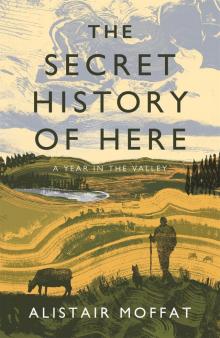 The Secret History of Here
The Secret History of Here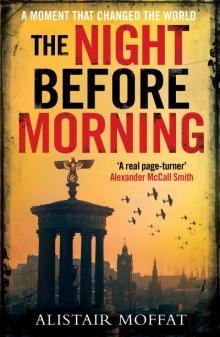 The Night Before Morning
The Night Before Morning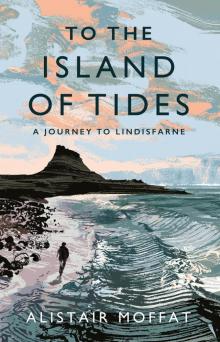 To the Island of Tides
To the Island of Tides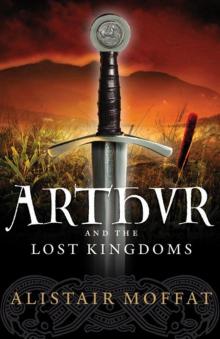 Arthur and the Lost Kingdoms
Arthur and the Lost Kingdoms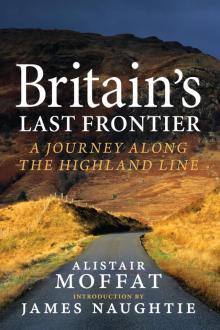 Britain’s Last Frontier
Britain’s Last Frontier The Faded Map: The Lost Kingdoms of Scotland
The Faded Map: The Lost Kingdoms of Scotland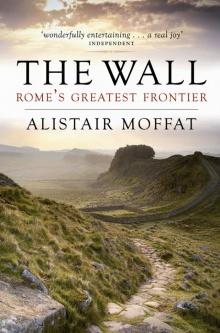 The Wall
The Wall